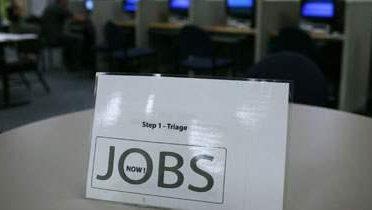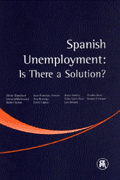Editor’s Note: This paper was released as a part of the January 13
Fostering Growth through Innovation event.
Executive Summary
Two critical problems afflict the U.S. job market: the short-term problem of high unemployment and anemic job creation; and the long-term problem of stagnating wages and eroding job prospects that began long before the Great Recession.
The immediate cause of the recession was the unraveling of the housing price bubble and the associated deterioration of household wealth. Stock prices fell 50 percent, and household net worth declined 25 percent. This huge loss of wealth has reduced households’ capacity and willingness to spend, severely damaged the credit-worthiness of tens of millions of potential borrowers and reduced the willingness of financial institutions to take lending risks.
The simplest, most persuasive explanation for the current jobs crisis is the shortfall in aggregate demand. The federal stimulus and drop in short-term interest rates have been insufficient to offset the wealth losses and tougher credit constraints. As a result, we remain in a protracted slump, with stubbornly high unemployment.
Other explanations for persistently high unemployment have been put forward. One is that the unemployed receive too much protection. But, the United States ranks near the bottom of industrialized countries in the generosity of its social safety net. A sophisticated version of the generous safety net argument is that American programs for the unemployed have become more generous in the current slump compared with earlier ones. That claim is largely true. Congress extended unemployment insurance (UI) benefits for an unprecedented 73 weeks. But, the increased generosity of the UI program increased the unemployment rate only modestly.
A more influential alternative theory to explain continued high joblessness is that the skills of unemployed workers are unsuitable for the job vacancies that now exist. Although this theory explains only a very small part of today’s high unemployment rate, it is true that, even as business prospects improved and the job vacancy rate began to rise, joblessness has failed to decline at the expected rate.
Currently slow wage progress stands in contrast to the experience of previous generations. Earnings gains used to be as strong at the bottom of the wage ladder as at the top. The turning point occurred in the 1970s, when economic growth slowed and widening income inequality reduced the gains of working Americans at the bottom of the ladder. Since then, technological change, globalization and weakening of unions and the minimum wage have all increased the importance of skills and education in determining an individual worker’s opportunities.
In the past 40 years, average real annual earnings shrank 40 percent among men with a high school diploma, but slipped just 3 percent among men who hold a college degree. For both men and women, the earnings premium from obtaining a college degree has risen almost continuously since the late 1970s. Job prospects also are diverging on the basis of the level of overall skill required to obtain the job. We are seeing a long-term rise in the relative demand for very highly skilled workers who can perform abstract tasks, relative stability in the demand for workers with the lowest skills, and a decline in the relative demand for workers with a middle range of skills.
Fiscal policy has been too conservative in combating the effects of the slump. The federal stimulus package was not nearly large enough to make up for the drop in aggregate demand. Although it makes sense to address the federal debt, it makes equally good sense to shrink the huge gap between actual and potential output. The nation can and should simultaneously address long-run fiscal problems and provide additional short- and medium-run stimulus. Long-term policies also should seek to raise educational achievement and attainment, and more closely align investments in education and skills to employers’ needs. Further, a wide variety of improvements, supported by research, should be made to our education systems.











